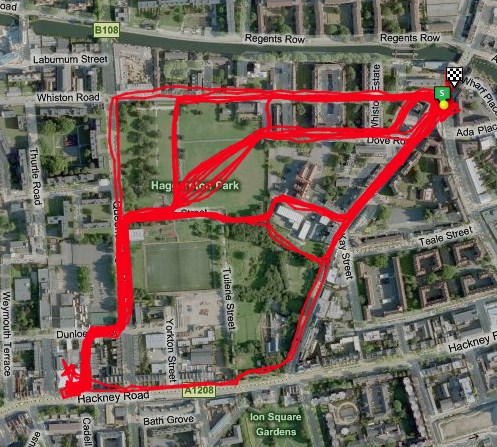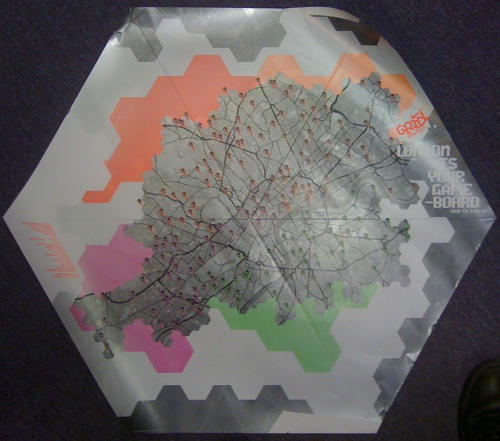Here is my GPS tracklog for the middle Sunday afternoon session of the Nike Grid game, running between two phoneboxes in E2. In order to stave off boredom, I tried to vary the route every time. Each leg was 800m-1km long. The bottom left is the Mecca Bingo on Hackney Road and the top right is by the bridge across the Regent’s Canal, just south of Broadway Market.

You can spot where a mini-football game was playing by my different routes through an otherwise unobstructed field. I also witnessed the aftermath of both a cycle accident (top right) and a car accident (top left)… The screenshot is from the Ascent application and includes imagery from Microsoft Virtual Earth.
I did so much running on the Sunday that I gave myself shin splints and so am not going to be doing any running at all for the next few weeks.
🙁
Despite my lack of personal success, my team did rather well and we have ended up with a lot of prizes.










